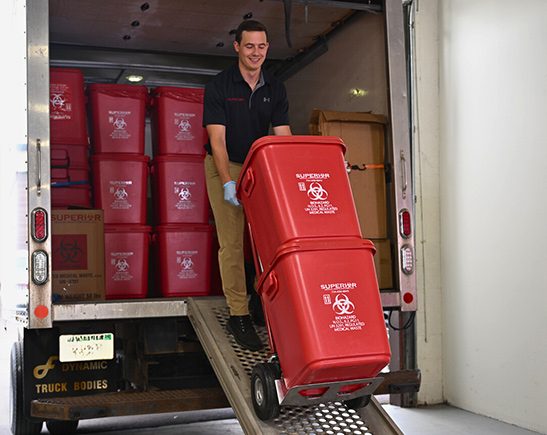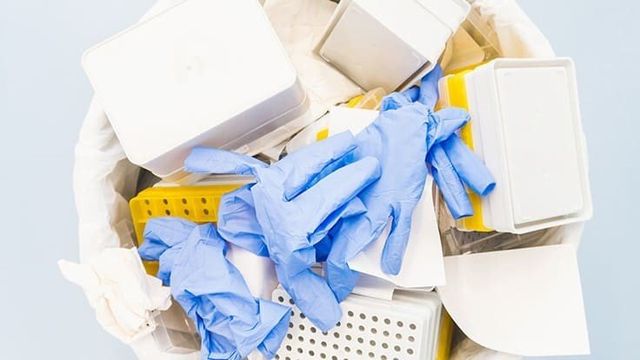Your Trusted Partner: Medical Waste Removal Services Tailored to Your Requirements
Keep Ahead of Rules: Professional Guidance on Medical Waste Disposal
In a globe where the healthcare sector is continuously developing, it is imperative for clinical centers to remain ahead of regulations when it involves the appropriate disposal of medical waste. With rigorous standards and regular regulative changes, it can be challenging to browse the intricacies of this process. However, with professional guidance, centers can guarantee conformity and alleviate risks connected with inappropriate garbage disposal. From understanding the different groups of medical waste to implementing the ideal collection and partition techniques, this discussion will provide beneficial understandings and actionable tips to help centers remain ahead of policies in the ever-changing landscape of medical waste disposal.
Comprehending Clinical Waste Categories
Comprehending medical waste categories is essential for appropriate disposal and monitoring in healthcare centers. Clinical waste refers to any type of waste generated by health care activities that might pose a risk to public health and wellness or the environment. It is vital to classify medical waste properly to ensure its risk-free handling, transport, disposal, and treatment.
There are numerous groups of medical waste that healthcare centers need to be acquainted with. One of the most common classifications include contagious waste, pathological waste, sharps waste, pharmaceutical waste, and chemical waste. Each group has certain guidelines and guidelines for its appropriate monitoring and disposal.
Contagious waste consists of materials polluted with blood or various other bodily liquids, such as handwear covers, dress, and laboratory cultures. Pathological waste describes human tissues, body organs, or body parts that call for unique handling and disposal. Sharps waste includes made use of needles, syringes, and other sharp things that can trigger injury and send infections. Drug waste makes up run out, unused, or infected medications that require cautious handling and disposal. Last but not least, chemical waste includes solvents, anti-bacterials, and other chemical materials used in health care facilities.
Remaining Up-To-Date With Regulatory Changes
Remaining present with regulative adjustments is vital for medical care facilities to guarantee conformity and correct administration of clinical garbage disposal. medical waste removal services. With laws constantly progressing, it is crucial for healthcare facilities to stay updated to prevent fines, fines, and potential injury to the environment and public health
To stay in advance of governing changes, healthcare facilities ought to establish a system for surveillance and tracking updates. This can be done by signing up for regulative e-newsletters, going to workshops and meetings, and actively participating in sector organizations. In addition, facilities need to designate a team member or team in charge of remaining educated and disseminating info to pertinent stakeholders.
Normal communication with regulatory firms is additionally important. Health care facilities ought to establish relationships with local, state, and government firms to guarantee they know any adjustments in regulations that might influence their waste monitoring practices. This can be done with routine meetings, participation in public comment durations, and proactive engagement with regulative agencies.
Moreover, medical care centers ought to think about partnering with waste monitoring firms that specialize in clinical waste disposal (medical waste disposal services with WasteX). These firms are commonly skilled in the most up to date policies and can offer assistance and support to ensure compliance
Applying Proper Collection and Partition Methods
To properly manage medical waste disposal, medical care centers must establish appropriate collection and segregation approaches in accordance with governing standards. Executing these approaches makes sure the safe handling and disposal of potentially unsafe products, protects the environment, and reduces the risk of injuries and infections to medical care workers and the general public.
Appropriate collection and segregation techniques involve making use of assigned containers and classifying systems. Healthcare facilities should offer clearly classified containers for different sorts of clinical waste, such as sharps, infectious waste, pharmaceutical waste, and non-hazardous waste. These containers ought to be color-coded and clearly marked to stay clear of complication and promote easy identification.
In addition, healthcare facilities need to educate their personnel on the proper treatments for accumulating and segregating clinical waste. This consists of educating them on the various sorts of waste, the suitable containers to utilize, and the value of following standards and guidelines. Routine training sessions and refresher course courses should be performed to guarantee that staff participants stay current on ideal methods.
Moreover, healthcare facilities must develop a system for regular collection and disposal of medical waste. This may entail partnering with certified waste administration firms that specialize in medical garbage disposal. These companies will guarantee that the accumulated waste is transported and thrown away in compliance with regulatory requirements.
Choosing the Right Disposal Approaches

Incineration is one of one of the most typical and efficient approaches for disposing of specific types of medical waste, such as pathological waste and sharps. It includes the regulated burning of waste at high temperatures, reducing it to ash. Nevertheless, incineration can release harmful contaminants into the air and add to air pollution.

Chemical treatment involves the usage of chemicals to sanitize and reduce the effects of the waste. Microwave therapy uses microwave energy to warm and disinfect the waste.
Making Certain Conformity With Paperwork and Training
After carefully taking into consideration the suitable disposal techniques for medical waste, medical care facilities need to make certain conformity with laws and reduce environmental influence by implementing effective documents and training procedures. This action is essential in preserving a secure and sustainable environment for both medical care workers and the public.

Healthcare employees who take care of medical waste must obtain proper training on waste segregation, taking care of, and disposal treatments. By giving comprehensive training, healthcare facilities can empower their personnel to make informed decisions and decrease the threat of inappropriate waste disposal.
Conclusion
To conclude, remaining in advance of policies in clinical garbage disposal is vital for medical care facilities. medical waste removal service. Understanding the various categories of medical waste, staying updated with regulative modifications, implementing proper collection and segregation methods, picking the suitable disposal approaches, and making sure conformity through documentation and training are all vital steps. By following these guidelines, health care organizations can properly dispose and take care of of medical waste in a safe and liable fashion
From comprehending the different classifications of medical waste to applying the right collection and segregation techniques, this conversation will certainly provide valuable insights and actionable ideas to help facilities remain in advance of regulations in the ever-changing landscape of clinical waste disposal. - medical waste disposal services with WasteX
The most usual categories consist of infectious waste, pathological waste, sharps waste, pharmaceutical waste, and chemical waste. Healthcare facilities need to provide clearly identified containers for various types of clinical waste, such as sharps, infectious waste, pharmaceutical waste, and non-hazardous waste. Medical care facilities need to establish a thorough find more info system to record and track all elements of clinical waste disposal, including kinds of waste generated, amounts, and disposal approaches made use of. Healthcare workers who manage clinical waste needs to obtain suitable training on waste partition, dealing with, and disposal treatments.